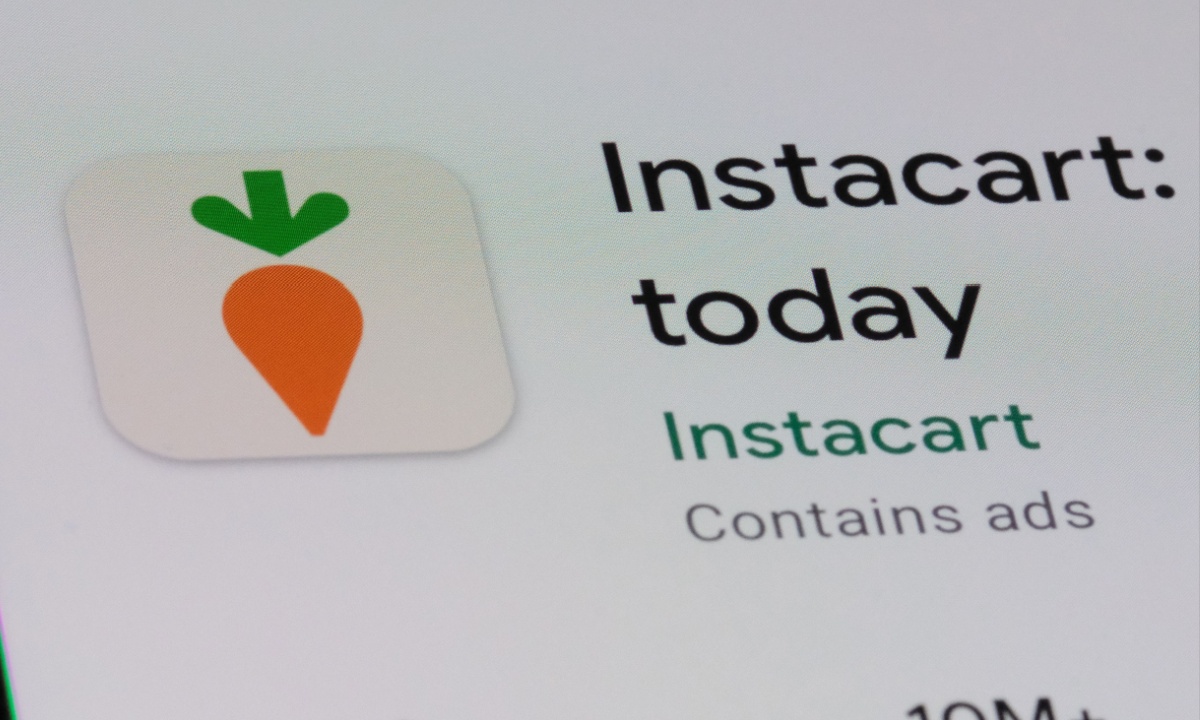Instacart’s expansion of retailer integrations and the implementation of advanced technology have streamlined the shopping experience, providing convenience, savings and higher engagement, CEO Fidji Simo noted Tuesday (Nov. 12) during the company’s third-quarter earnings call.
Referring to retailer integrations as the company’s “secret sauce,” Simo noted that in the third quarter retailers that launched at least one new service with Instacart, such as EBT SNAP, pickup, alcohol delivery or loyalty integration, saw their sales grow nearly twice as fast as partners without new launches. The deeper the integration, she added, the better the product and customer experience, contributing to gross transaction value (GTV) growth.
“One of the most important indicators of growth on our platform is the depth of integration with retailers,” Simo said in her third-quarter letter to shareholders. “I cannot emphasize this point enough. When it comes to driving growth, depth of integration is so much more important than exclusivity.”
Instacart’s digital circular (flyers), EBT SNAP, and loyalty program integrations with top retailers helped customers save more than $1.1 billion on marketplace orders in the past year, the letter noted. This includes new initiatives such as Kroger’s integration with flyers, where every featured item is now priced at parity with in-store prices, plus the ability for customers to collect fuel points.
By integrating with retailers’ inventory systems and applying prediction models from more than 1 billion orders, Instacart improved “found and fill” rates, especially for larger baskets, according to the letter. Technology like Carrot Tags, which integrates with retailers’ electronic shelf labels, is elevating the shopping experience by helping customers find items more easily.
“We can also offer the best quality service because of the scale and depth of our integrations,” according to the letter. “Getting exactly what you ordered is critical to driving better customer retention, and it’s even more challenging for large baskets over $75, which represent 75% of the industry.”
Tech Integrations
This emphasis on seamless service quality is supported by Instacart’s Storefront Pro solution, which enhances retailer websites with new customizable offer types and features, Simo said. By providing customers more ways to save and improving the shopping experience, Storefront Pro is driving growth for more than 1,500 retail banners.
“The deep integrations, including loyalty hubs and clickable flyers, strengthen Instacart’s omnichannel presence, ensuring seamless customer experiences both online and in-store,” according to the letter. “The value of deep retailer integrations is even more apparent when you look at our enterprise technology for retailers’ owned and operated websites.
“As an example, we’ve powered Sprouts.com since 2018, and we recently relaunched their site on our new Storefront Pro solution. As part of this upgrade, we built more than 30 new customizable offer types, which are immediately available to all 1,500+ of our retail banner partners to provide customers with more ways to save and help further accelerate growth. We also created 120 additional features for Sprouts, including a clickable flyer and loyalty hub, which can be leveraged across other white-label storefronts and our marketplace as well.”
Simo added in her letter: “Because we have already built integrations with retailers’ core systems — from their point-of-sale to catalog to loyalty programs to couponing — we can much more easily launch new technology offerings for their stores as well, which gives us a right to win in omnichannel.”
By the Numbers
Instacart’s priority on retailer integrations positively impacted the company’s third-quarter financial results. GTV increased 11% to $8.3 billion, while orders of 72.9 million rose 10% year over year. Total revenue increased 12%, to $852 million, while average order value (AOV) was $114, a 1% rise year over year.
In addition to these financial gains, Instacart enhanced its service with a variety of personalized and cost-saving features aimed at improving the customer experience. New initiatives, such as the addition of flyers for more retailers like Kroger and Schnucks, are helping shoppers save more. On the homepage, customers can now instantly access restaurant discounts and personalized notifications for local favorites, while adding items like alcohol and beverages from Instacart retailers to their restaurant orders, making the platform more interactive and convenient.
Additionally, new partnerships with Wyndham Hotel Group and United Franchise Group extend Instacart’s reach, while Carebot, the artificial intelligence-powered customer support agent, now handles more than one third of interactions, handling issues like refunds and cancellations.
“Our business is strong and we remain hyper-focused on extending our lead as the leading grocery technology company in North America by doubling down on our critical advantages and growing the pie for our stakeholders,” Simo added in the letter.
“With the grocery market still vastly underpenetrated online, we’re taking an aggressive approach to reinvesting in opportunities that we believe can drive long-term growth while steadily expanding profitability.”

